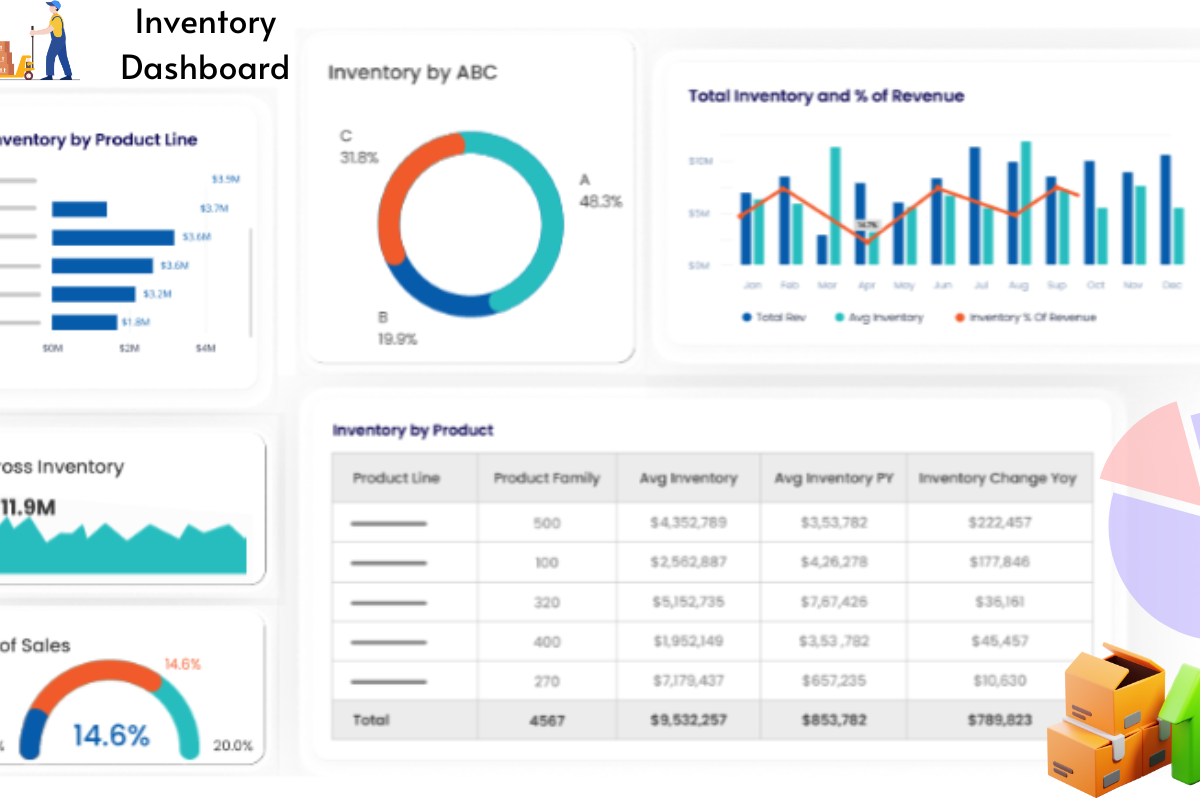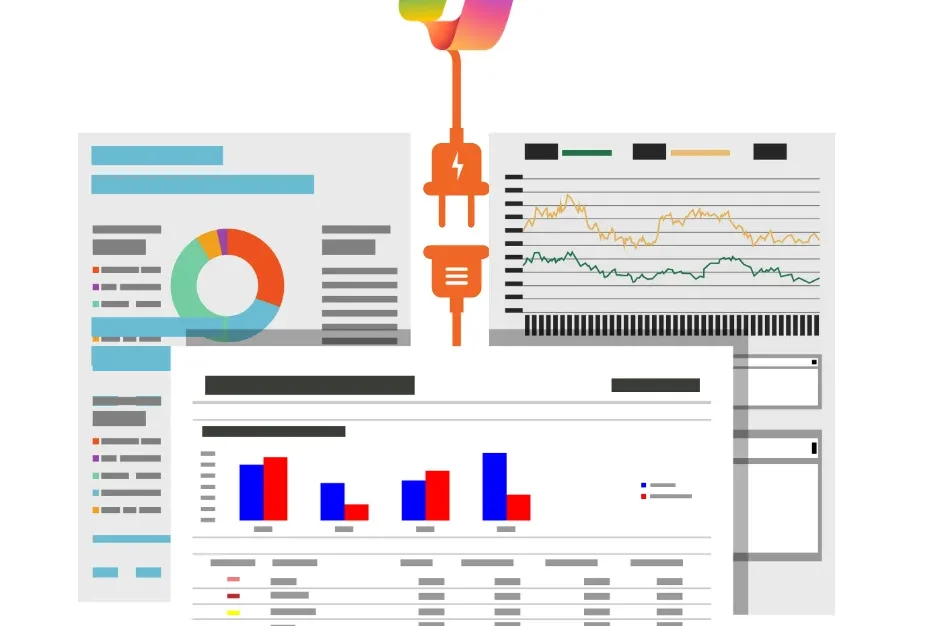Getting Started with RPA
Robotic process automation (RPA) is a technology that uses software robots to automate repetitive, mundane, and routine tasks, mimicking human actions to carry out error-free tasks at high volume and speed. Put simply, the role of RPA is to automate tasks that are rule-based, repetitive in nature, and time consuming. These tasks can include queries, calculations and maintenance of records and transactions. The robots are capable of performing tasks 24/7 across applications and systems.
Robotic process automation companies promise to boost efficiency for organizations as employees can leave the tandem tasks to the robots and focus on the more meaningful tasks. RPA software is not part of an organization’s IT infrastructure. Instead, it sits on top of it, enabling a company to implement the technology quickly and efficiently—all without changing the existing infrastructure and systems. Robotic process automation can be a difficult concept to fully comprehend, so let’s break it down further.
What are RPA bots?
Robotics when used in context of RPA does not mean the mechanical robots or humanoid developments you may be imagining. What we mean here are the software robots which work inside a computer. RPA bots mimic a human worker by completing such tasks as logging into applications, entering data, calculating and completing tasks, transfer files and folders, copy and paste data, extract structured, semi-structured and unstructured information from documents, and more. Robots are flexible and are capable of doing tedious work at much a higher pace and accuracy level compared to human workers.
Example: Odds are, you’ve already experienced RPA bots in the form of either Virtual Assistants or Chatbots.
What processes are good candidates for RPA?
Process is a set of actions taken in order to reach an objective. Processes that involve subjective decision-making are not suited for automation as only humans are able to make these types of decisions. However, if the process is highly rule-based, repetitive in nature, and mundane, it is likely a good candidate for automation. Here are some processes that are good candidates for RPA:
Human Resources
HR departments deal with onboarding of new hires, processing payroll, benefits enrollment, sending company emails, compliance reporting, and more. All these tasks can be automated with the help of robotic process automation services.
Claims Management
Claims processing is another area from the insurance sector which involves a high volume of validations and complicated workflows. Let the RPA robots take care of processing forms, validating claims, sending notification, processing payments, and more.
Customer Service
RPA bots can take of customer service tasks like incoming tickets to the system, filtering them as per department, resolving the tickets based on pre-defined solutions, closing the tickets, sending mails to the stakeholders, and others.
What is automation?
The final part of RPA is automation. Automation defines a technology that reduces human inputs in a process. Automation allows humans to be removed from the process and robotic process automation bots to take over. Automations are performed by means of software programs, commands, and decision points.
Example: An email that automatically sends after a customer makes an online purchase.
Get a FREE quote on your project today!
Your idea is 100% protected by our Non-Disclosure Agreement
Robotic Process Automation Example
Now that we have an understand of robotic process automation and all of its parts, let’s apply this knowledge with an example:
Bill is an employee working for a financial firm where on a daily basis, Bill is responsible for creating reports using web applications, databases, and Excel sheets, then email a report to his supervisor. Below is a diagram that lists the activities Bill does at each step.
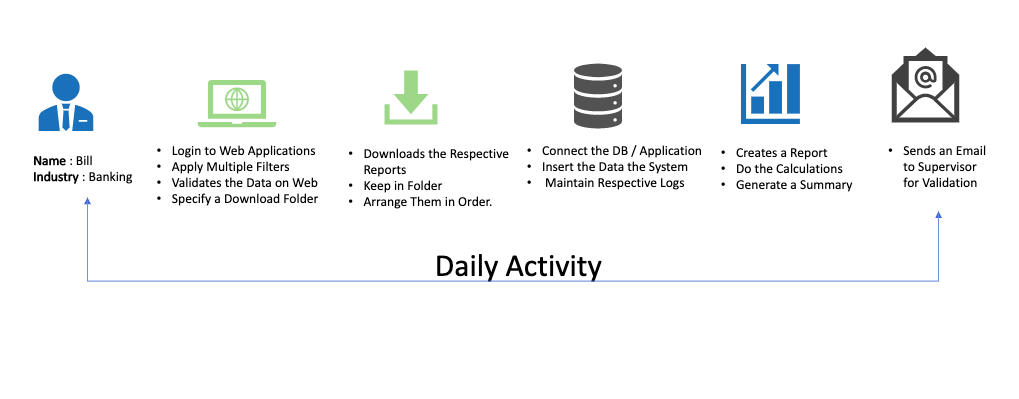
Now, when analyzing the process, we notice:
-The process Bill is doing is repetitive in nature.
-Bill does not have to take decisions.
-The tasks are properly defined.
-There are chances of manual error while doing the process execution.
For all the reasons listed above, this process is a good candidate for a robotic process automation. Let’s see how an RPA robot fits into the picture.
With the help of the RPA technology, we can create a software robot which can take care of all the tasks such as:
-Robot will launch the application
-Log in to applications with secured credentials
-Apply the filters on the application
-Validate the data
-Download the specified data in a folder
-Arrange/Rearrange the data
-Connect to the database or any application
-Feeds the data
-Can perform the calculations
-Generate the reports
-Send a final email for validation
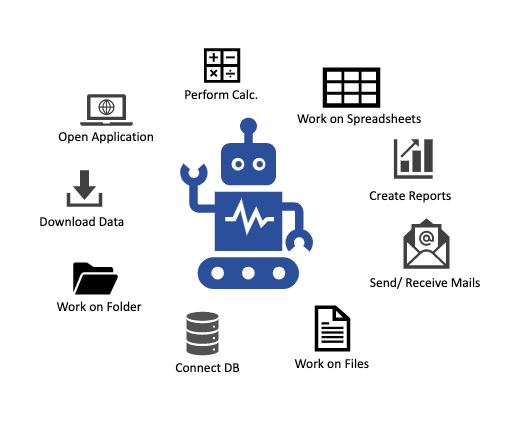
RPA Benefits
Deciding to introduce RPA into your organization can be a real shock to your system. We know that change is hard, but we think you’ll be quite pleased with the results once you choose to implement process automation into your current business processes. Here are a few benefits of robotic process automation:
Scalability
RPA system can be quickly scaled to handle large volumes of data when the workload spikes.
Greater Accuracy
Robots can achieve higher rates of accuracy and analysis which can bring down error rates and increased quality.
Save Time
RPA software bots save your company time by completing tasks faster than human staffers.
Increase Productivity
An RPA bot can organize files, sift through large amounts of data, identify patterns, read files, and complete more rule-based tasks while your human employees can tackle more meaningful jobs.
ROI for RPA
ROI for RPA is a major driving factor for adopting automation. The Institute for RPA estimates that process automation solutions can deliver an immediate savings of 25% to 40% in labor costs alone. McKinsey Digital also found that automating business processes can result in an ROI of between 30 and 200 percent in the first year.
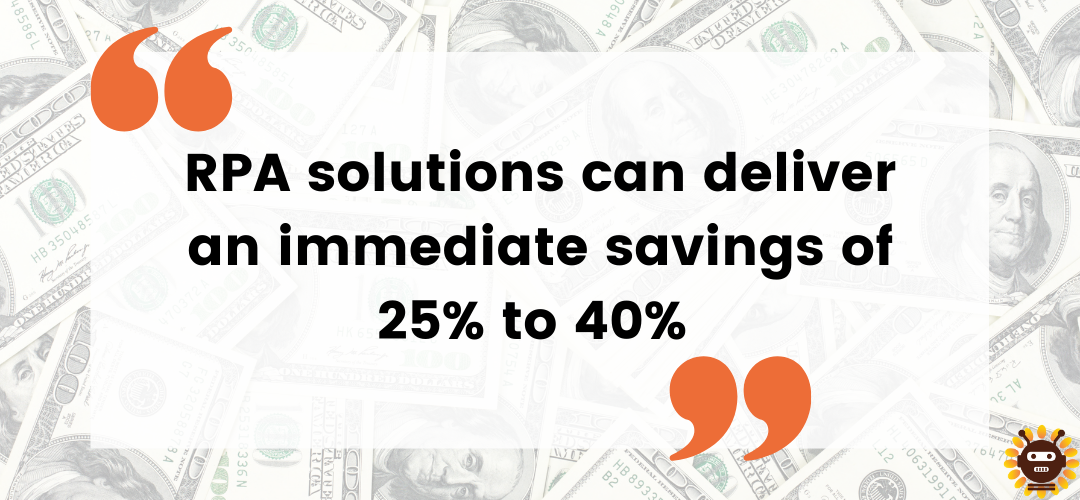
Who should implement RPA?
RPA is considered to be a significant step an organization can take toward digital transformation. If an organization is looking to save time and money on business operations, they should implement process automation. If a business relies on process that are rule-based, repetitive, and flow at high volumes, they should implement RPA. If a company is interesting in getting more value out of its employees to elevate the quality of their outputs, they should implement RPA. If an organization wants to increase productivity to 24/7 without vacation time, coffee breaks, or off-shore teams, they should implement process automation. These are just a few situations where someone could benefit from robotic process automation.
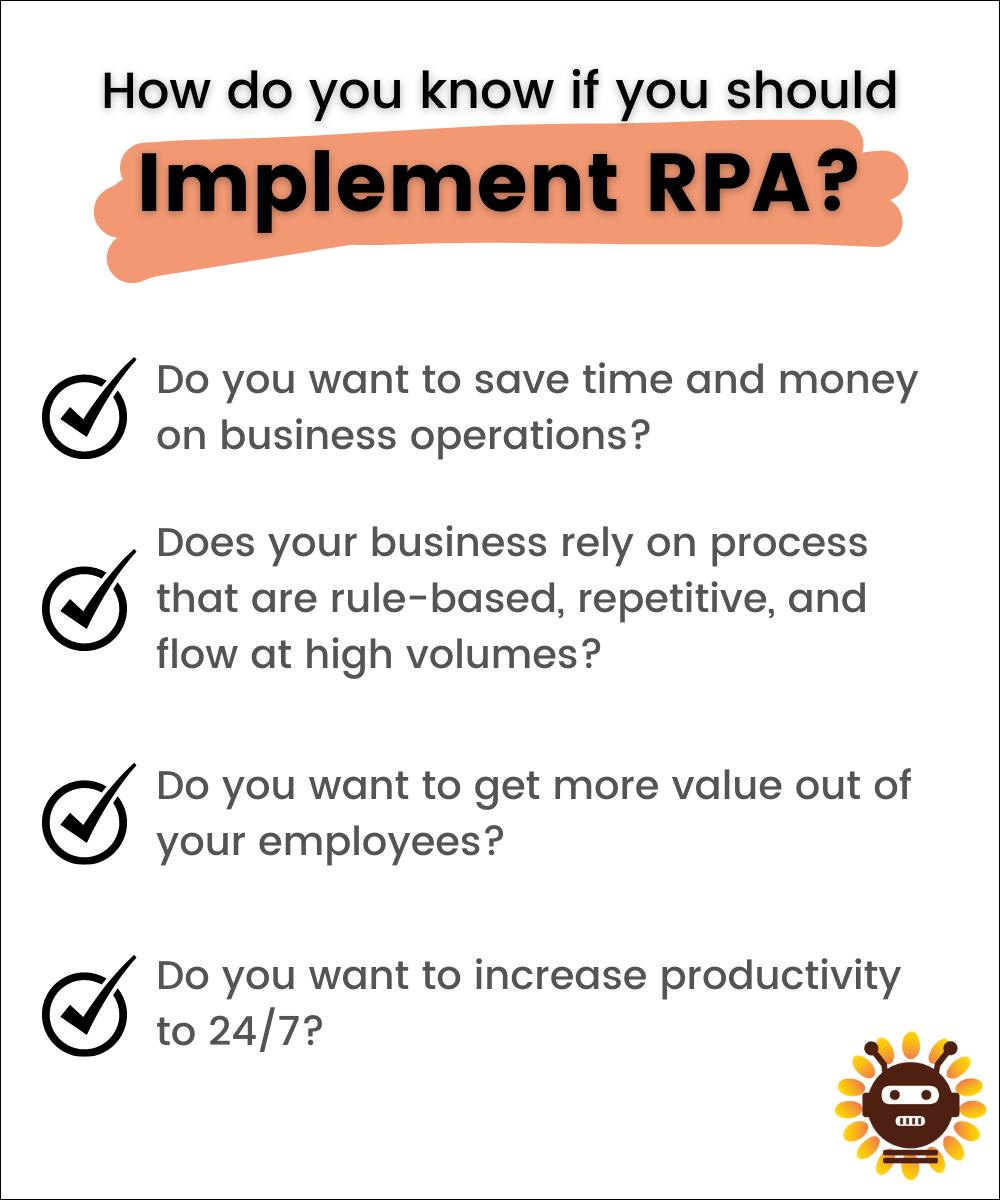
How do you implement RPA?
With the help of an RPA consulting company, implementing RPA into your current business processes can be a seamless process. RPA implementation typically follows this 7-step process.
1. Analysis
The first phase of RPA implementation involves identifying rule-based processes carried out by employees and prioritizing those automation candidates.
2. Solution Design
The Solution Design Document (SDD) is vital to the design phase. This captures the details of the automated flow of the business processes and the target systems used for the automation.
3. POC
During the Proof of Concept (POC) phase, we deploy an automation bot to perform basic tasks to test the viability of the RPA in the client’s environment.
4. Development
Our software team codes, tests, and maintains both the automation bots and the entire RPA ecosystem.
5. Review
We gather feedback from stakeholders on suggested improvements, areas of risk, and any input on improving the RPA solution.
6. Go Live
After taking the feedback into account, we deploy the bots to start automating your business functions.
7. Support & Maintenance
With support & maintenance from Sunflower Lab, you can get back to business without having to worry about managing your RPA software.
3-week pilot program
Some RPA consulting companies offer a 3-week pilot program where bots are delivered in phases with testing for AI or other cognitive technologies integration.
3 RPA Myths
Now that we’ve gone in-depth about what RPA is, let’s discuss what RPA is not. There are many misconceptions surrounding robotic process automation and automated business services. Let’s put an end to those rumors.
RPA is a Replacement for Humans
There is a common misconception regrading RPA that it is going to replace the humans which is not the case. Rather, RPA is going to take the mundane and repetitive tasks from the human so that the humans can focus more on the strategic tasks. With the Implementation of process automation, employees can do more creative, innovative, and interesting work.
RPA Cannot Handle Complex Processes
RPA is sometimes confused with a technology which just simply record the steps and replays the same and is considered to be fit for only small processes. The reality is RPA has the capability to automate all kind of processes: linear, iterative, transactional—with difficulty levels ranging from easy, too moderate, too complex.
Humans and Robots Cannot Work Together
Once a robot has started execution, it is believed that there is no scope of human intervention in the process—on the contrary! Now with different types of robots (attended, unattended) executing a process, RPA has capability to take the inputs from the user, allowing the critical decision-making element to stay with the human. We can have automations where human and robots are working together to complete a process.
Starting Your Journey with Robotic Process Automation
We believe the future will be automated, so kudos for doing your research now! Hopefully, you’ve gleaned a better understanding of what RPA is, what processes are good candidates for automation, its benefits, and more. Still craving more information about business automation? Click here to learn more about robotic process automation services. Check back again soon for more RPA content and how it can help take your business to the next.
Sunflower Lab has multiple locations to better serve our clients. Robotic process automation services Columbus, Ohio, robotic process automation services New Jersey, and robotic process automation services New York all designed specifically to accommodate the needs in each unique market.
Get a FREE quote on your project today!
Your idea is 100% protected by our Non-Disclosure Agreement
Related Posts
Transform Patient Care With Power BI Healthcare Dashboards
Gain valuable insights, make well-informed decisions, and improve overall patient care with the Power BI healthcare dashboard.
Power BI KPI Dashboard: Your Guide to Key Performance Indicators Visuals
Visualize key metrics effortlessly with Power BI KPI dashboards. Monitor performance, spot trends, and stay ahead of the competition.
You might also like
Stay ahead in tech with Sunflower Lab’s curated blogs, sorted by technology type. From AI to Digital Products, explore cutting-edge developments in our insightful, categorized collection. Dive in and stay informed about the ever-evolving digital landscape with Sunflower Lab.



